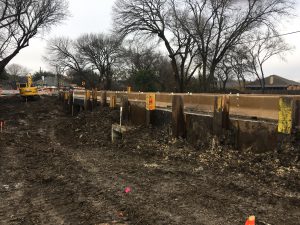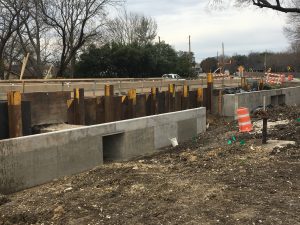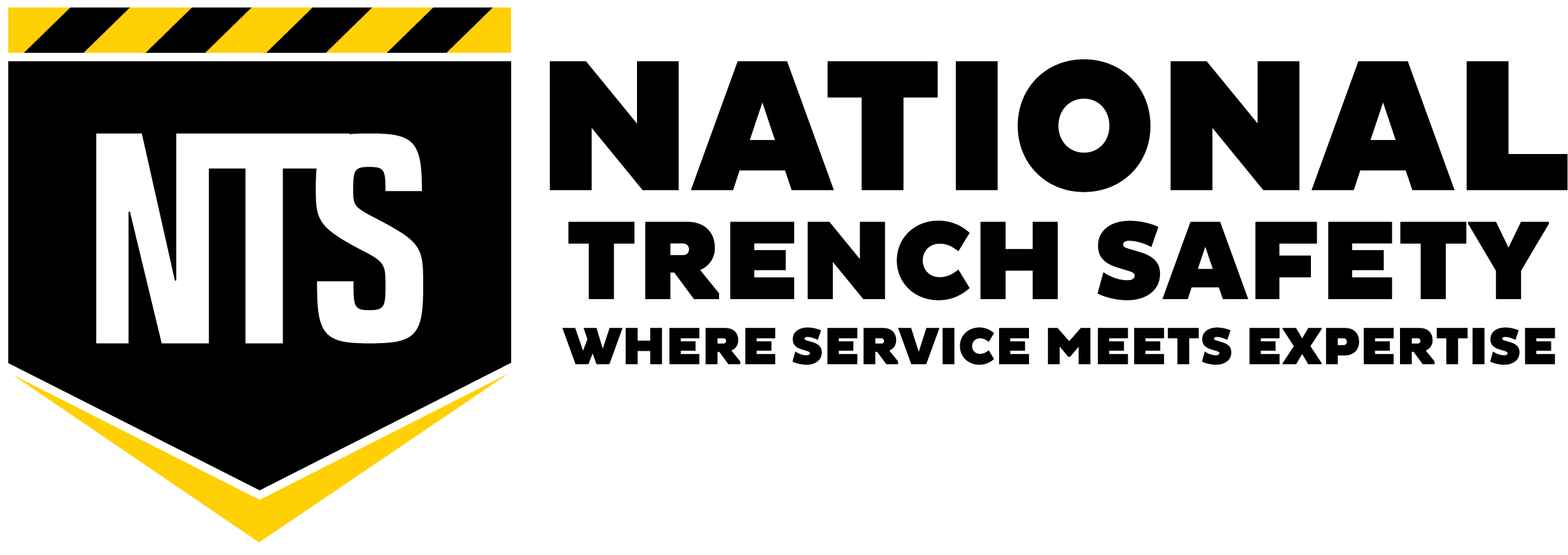Site-Specific Cantilever Beam and Plate System Secures Culvert and Road Widening Project
A small city located south of Dallas was conducting routine drainage and road infrastructure inspections when it was determined that a section of a two-lane road would require to be widened due to the high volume of traffic in the area. The improvements would also expand the existing drainage infrastructure so that the increase in footprint and flow of stormwater would be distributed properly. The project was awarded to a well-known utility Texas contractor that specializes in road and utility repairs. The contractor would have to widen the road 16-ft and construct a new culvert structure. The competent person on-site classified the black clay soil as Type C-60.
 The project site had an approximate length of 0.03 miles and was located on a dangerous two-way road with sharp corners. A storm basin sat at the top of the lanes a few feet apart from an existing subdivision. The project site would require two excavation cuts with a linear run of 120-ft and a depth of 12-ft that ran parallel to the road where two new 120-lf culvert structures would be constructed. The contractor was concern with the possibility of the soil unraveling as the road had a considerate higher elevation. Additionally, the road would remain operational throughout the project. The contractor would require a protective system that could provide a wide-open work area for the precast culvert installation and the foundation pour of the wing walls while meeting with all of TX-DOT requirements.
The project site had an approximate length of 0.03 miles and was located on a dangerous two-way road with sharp corners. A storm basin sat at the top of the lanes a few feet apart from an existing subdivision. The project site would require two excavation cuts with a linear run of 120-ft and a depth of 12-ft that ran parallel to the road where two new 120-lf culvert structures would be constructed. The contractor was concern with the possibility of the soil unraveling as the road had a considerate higher elevation. Additionally, the road would remain operational throughout the project. The contractor would require a protective system that could provide a wide-open work area for the precast culvert installation and the foundation pour of the wing walls while meeting with all of TX-DOT requirements.
After carefully weighing in all of the site concerns and reviewing all of the TX-DOT requirements, the contractor understood that a site-specific engineered solution would be needed in order to address all of the site concerns. NTS came on board and penciled in a few cost-effective site-specific solutions. The contractor selected an engineered cantilevered beam and plate system. The progressive installation process normally starts by driving the beams to the ground or pre-drilling pilot holes and push the beams to the necessary depth according to the engineer’s plan. Normally steel plates are inserted between the beams or placed behind the beams and pushed to the desired depth. For this project, the beams were pushed into pilot holes and placed in short intervals while the plates were placed behind the  beams overlapping each other which allowed the strength from the beams to be transferred to the overlapping plates across the excavation span. The overlapping plate design addressed the surcharge load concerns which prevented any type of erosion that may have caused the road to slump. The contractor was extremely satisfied with the performance and protection provided by the cantilever beam and plate system.
beams overlapping each other which allowed the strength from the beams to be transferred to the overlapping plates across the excavation span. The overlapping plate design addressed the surcharge load concerns which prevented any type of erosion that may have caused the road to slump. The contractor was extremely satisfied with the performance and protection provided by the cantilever beam and plate system.






